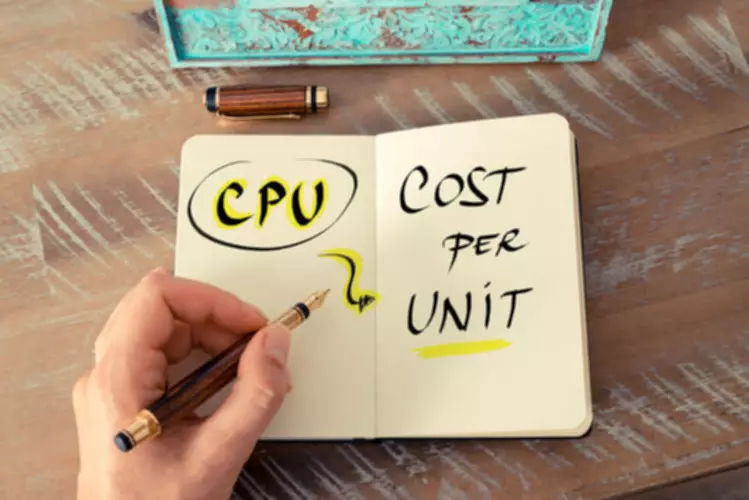Accounting & Bookkeeping Service for Manufacturing Business
Content

Manufacturing overheads might include the costs for powering a factory’s equipment and personnel not directly involved in producing the product. In this guide we’ll walk you through the financial statements every small business owner should understand and explain the accounting formulas you should know. Direct labor is the value given to the labor that produces your goods, such https://www.bookstime.com/ as machine or assembly line operators. Generally, this includes the cost of the regular hours, overtime, and relevant payroll taxes. Very often, this is listed in a bill of materials, which itemizes quantities and costs the materials used in your product. In process manufacturing, such as food and beverage or chemicals, the bill of materials is known as a production recipe.
Note that the direct labor box has both a yellow and orange outline; remember that it is both a prime and conversion cost. Focusing first on raw material, a company must determine how much of the available supply was transferred into production during the period. The following schedule illustrates this process for Katrina’s Trinkets, a fictitious manufacturer of inexpensive jewelry. We work on virtual technologies like Team Viewer, Virtual Private Network (VPN) to share and access data from your system.You have to share your accounting software login details. Accounting for Manufacturing Businesses deals with inventory valuation and the cost of goods sold. In summary, Accounting for Manufacturing Businesses is much more detailed for a business that maintains no inventory.
Keep up to date with the latest financial trends
It is commonly termed as factory overheads and is incurred in running the operation of the factory. Another benefit of utilizing manufacturing software is improved accuracy and quality control capabilities. By tracking every step in the production process, you’ll be able to quickly identify any problems or areas where improvements could be made. The manufacturing process requires complex systems and processes, which is why specialized software is often necessary.
ABC is a very accurate costing methodology that helps to factor indirect costs into unit pricing. It can be more difficult to implement than standard or job costing, however, as a more detailed overview is required over the manufacturing process. Calculating TMC is imperative for gaining insights into the financial health of a manufacturing business and making the operation more cost-effective. This KPI determines the difference between the cost of production of a finished product and its market value. If the cost of production is lower than a product’s market value, a markup is added which makes up the factory profit. If cost of production is higher, the value will be negative, culminating in factory loss.
Handbooks of Management Accounting Research
In this blog post, we’ll explore the various options and help you determine which approach will work best for your manufacturing business needs. Inventory valuation, direct labor and manufacturing overhead costs are just part of the recipe that is cost accounting in the manufacturing industry. Keeping accurate financial records is vital for any business, but manufacturing is even more essential. Manufacturing accounting is a specialized field that requires a deeper understanding of the industry and its unique processes and costs. It is crucial to select accounting software that seamlessly integrates with other essential programs, such as inventory management, production scheduling, and invoice generation.

This can produce a higher degree of accuracy, but many manufacturers are unlikely to have items that have a unique identification. This is better for high-value items that need differentiation, rather than interchangeable items. This accounting system allows you to work out the individual cost of manufacturing for a product and apply the right mark-up to get the project margin you desire.
Financial Reports Are Used To Track The Financial Health Of A Company.
A company’s results of operations are sensitive to proper cost assignment, and management accountants are focused on processes for correctly measuring this information. The value of inventories plays a large role in a company’s finances and profitability, as it directly affects both COGM, COGS, and tax liability. In fact, large swaths of manufacturing accounting can be viewed as aspects of https://www.bookstime.com/articles/manufacturing-accounting the larger inventory management process. Manufacturing accounting is a group of inventory and production management processes used for monitoring and controlling the costs involved with manufacturing products. Accounting for manufacturing businesses is a large undertaking and the manufacturing accounting process is detailed and complex, with a lot of information to track and sort through.
The accounting department is an integral part of a manufacturing firm’s operations. It provides managers with critical information needed to make sound decisions about where to invest resources and how to price products or services. The accounting department is responsible for recording and storing financial information for a company. They prepare financial statements management uses to decide on the company’s finances. In addition, the accounting department also provides information to the sales team about which customers owe money and how much they owe.
How To Overcome The Challenges Faced By The Accounting Department
Your cost of goods sold and ending inventory values play a significant role in your manufacturing business’s profitability. Because that directly affects your tax liability, the IRS requires that you use specific methods to calculate both numbers. This will be an accumulation of the money you have spent on direct materials, direct labor costs, and manufacturing overheads on each work-in-process item in your inventory.
How do you prepare manufacturing accounting?
Preparation of manufacturing account entails factoring of both direct and indirect costs. The direct cost are referred to as prime cost while the indirect cost is referred to as factory or production overhead. The summation of the prime and the overhead production cost translate to total production cost.
In fact, some trade secrets could be lost by publicly revealing the level of detail found in the schedules. For example, a competitor may be curious to know the labor cost incurred in producing a product, or a customer may think that the finished product price is too high relative to the raw material cost. Direct labor is the value given to the workers who manufacture your products.
Job costing
These insights enable businesses to optimize their inventory management strategies and achieve a more streamlined and profitable manufacturing process. Employing job costing enables businesses to assign costs to each production run or batch of products, facilitating a comprehensive tracking of expenditures specific to each job. The resulting data can then be leveraged to make informed pricing decisions, optimize production processes, and allocate resources effectively.

You should be sure to hire talented and capable individuals for your finance team, people that will add real value to your accounting processes. Not only this, but you should maintain an environment of continuous learning, and provide the relevant tools / training for each employee to excel in their role. This strategy can be used when the production process is completed over many different stages. It can also be used to determine the costs incurred by a particular department for a production run.
The accounting department can work with the facilities manager to control energy costs. The accountant can analyze energy usage and identify areas where the company can reduce its energy consumption. A manufacturing company’s budget is one of its most important tools for achieving success. The accountant must thoroughly understand the company’s financial position to develop a realistic budget that will allow the company to reach its financial goals.
What are the 3 inventory accounts used by a manufacturing company?
Manufacturers deal with three types of inventory. They are raw materials (which are waiting to be worked on), work-in-progress (which are being worked on), and finished goods (which are ready for shipping).
These articles and related content is not a substitute for the guidance of a lawyer (and especially for questions related to GDPR), tax, or compliance professional. When in doubt, please consult your lawyer tax, or compliance professional for counsel. Sage makes no representations or warranties of any kind, express or implied, about the completeness or accuracy of this article and related content. An important account reconciliation guide including the basics, best practices, and why account reconciliation is essential for businesses. Having these standards allows you to detect variances that can be analyzed, allowing trends to be spotted, and enabling you to make the right adjustments to pricing.
Running a manufacturing company while managing its books is a challenging prospect. Manufacturing involves a significant amount of cost accounting, which is a notoriously complex subject. This accounting method tracks individual items of inventory, which is useful if you can identify each item with, for example, a serial number or RFID tag.
